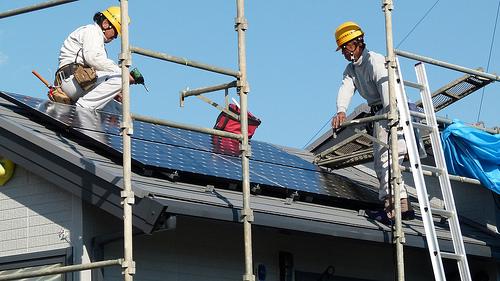A study has found that if solar panels were to be installed on the rooftops of all Californian residence, it would generate enough power to supply up to 500% of the states’s energy needs. These findings also disproving the misconception that there is not enough space available for sufficient installations.
The study, conducted by the Carnegie Institution for Science in the US and led by Rebecca R. Hernandez, showed that the installation of solar panels on building and residential rooftops across California as well as solar power plants in the state’s public parks could generate more than enough electricity without any risk to the environment.
Solar panels capable of cancelling out energy concerns
According to Henandez, “integration of solar facilities into the urban and suburban environment causes the least amount of land-cover change and the lowest environmental impact”.
There are two types of solar technology that the study focused on; one type is photovoltaic solar panels, and the other type consists of giant curved mirrors that concentrate the sun’s rays.
The study revealed that a combination of both types would be the ultimate configuration, but it depends on the type of urban space that is available in a particular area. The full results from the report have been published in Nature Climate Change.
For instance, data collected by researchers connected with the study showed that the total area of around 6.7 million acres would be the best if solar panels are to be installed. Their installations would be mostly on rooftops, however, an additional 1.6 million acres will be required if concentrated solar power plants are to be built.
By utilizing pre-existing infrastructure, report answer concerns over space
Even if there will be no clearing of additional space, these small-scale solar installations can already generate up to 21,000 terawatt-hours of energy per year. With this figure in mind, roughly 15,000 terawatt-hours will come from photovoltaic panels, and an additional 6,000 terawatt-hours will be generated by concentrated solar power.
If the total figure is tallied, it would be up to five times more energy than what the entire state of California currently requires.
In addition, Hernandez found that other non-ecologically sensitive sites are available. These include degraded land or abandoned lots which could be developed with minimal effort. If these areas are improved, they can be used to provide even more available space for solar panels.
Report findings to be easily be applied in countries across the world
“Because of the value of locating solar power-generating operations near roads and existing transmission lines, our tool identifies potentially compatible sites that are not remote, showing that installations do not necessarily have to be located in deserts,” explains Hernandez.
The results of this study can be applied to other areas, not just in California, although it is one of the prime solar power spots in the United States. If an urban area has sufficient sunshine throughout the year, it can also generate a significant amount of energy from solar installations.
There is no reason why solar panels have to be installed in the desert. Decades of development in urban and suburban areas across the world hold an astonishing amount of unused space just waiting for the renewable revolution.
Photo courtesy of Bernd on Flickr



